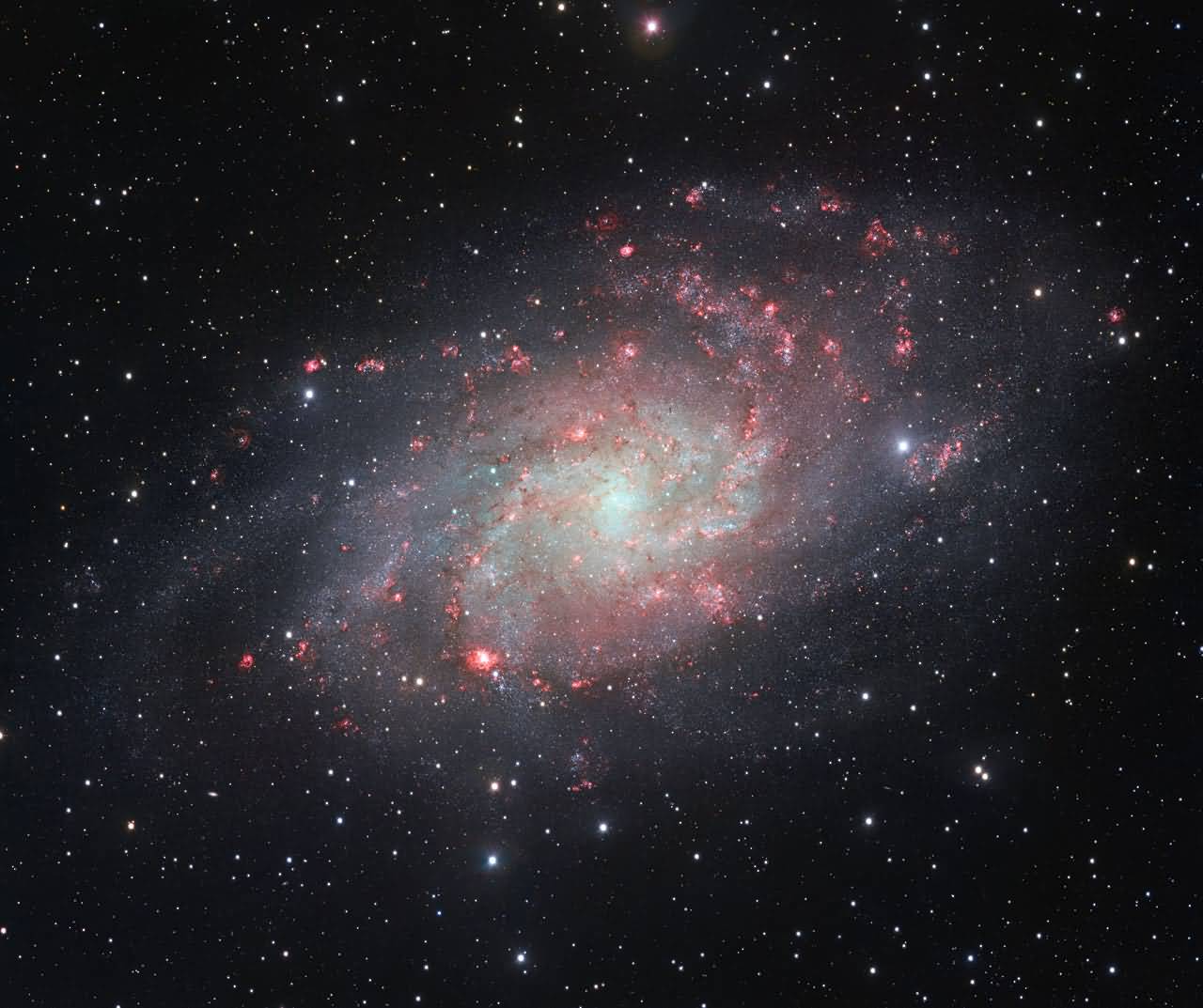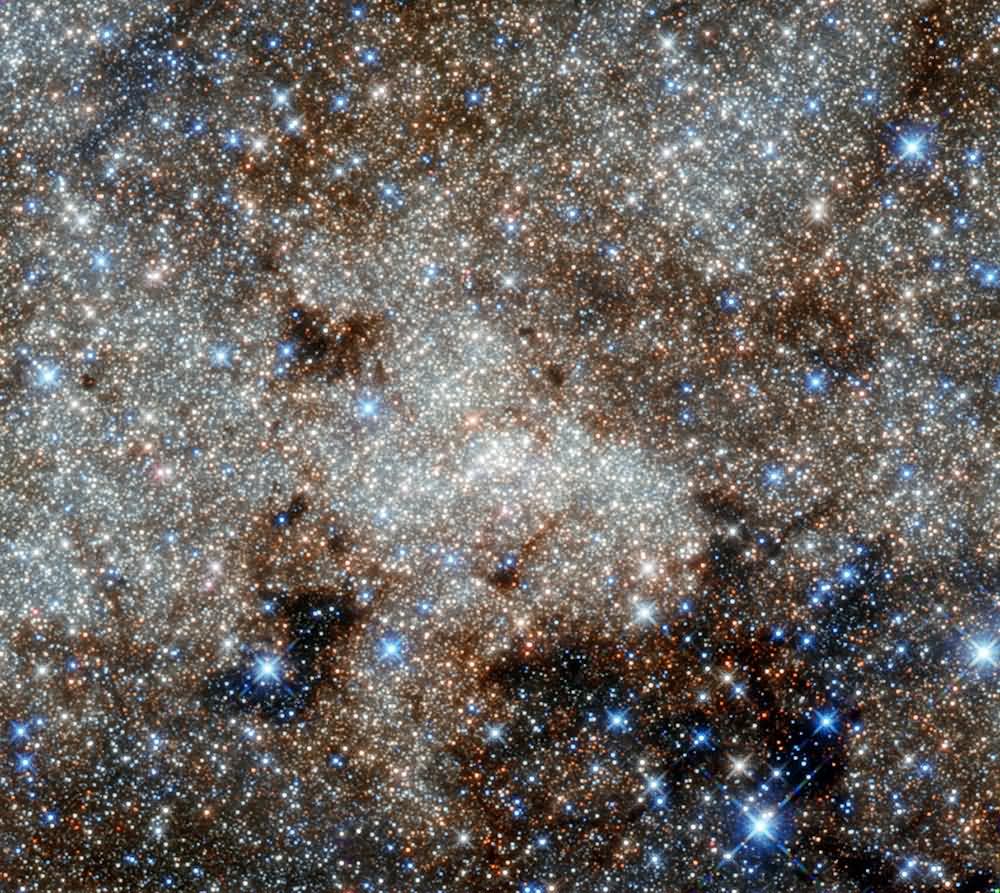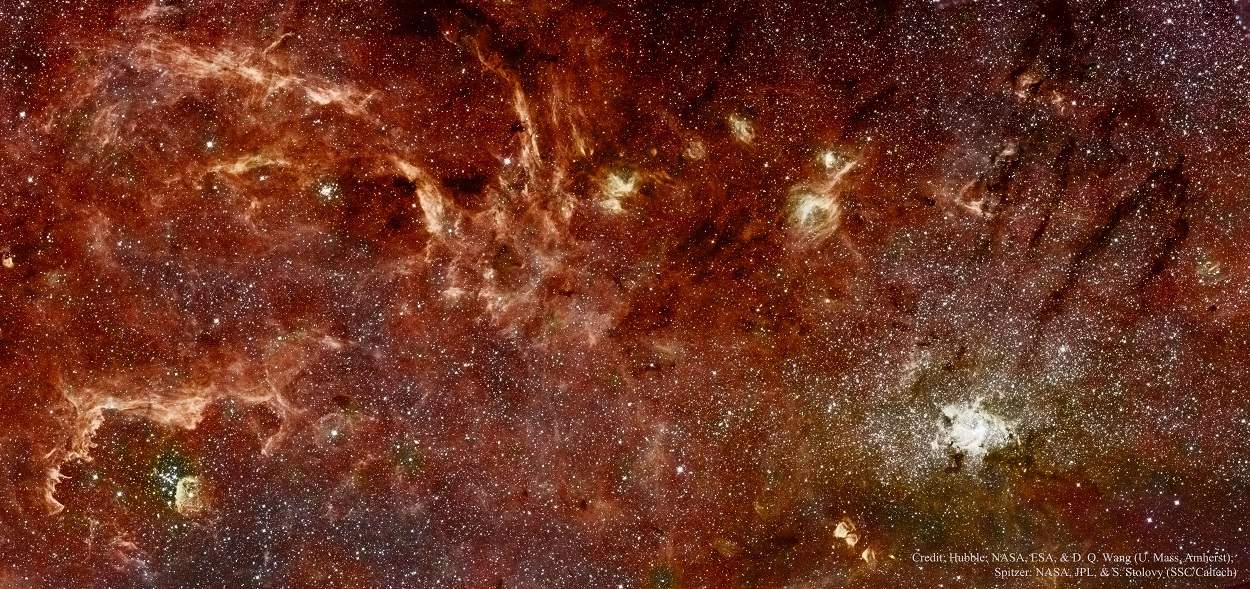VST Images Triangulum Galaxy
ESO's VLT Survey Telescope (VST) in Chile has captured a beautifully detailed image of the galaxy Messier 33. Filled with bright star clusters and clouds of gas and dust, this nearby spiral galaxy is the second-closest major galaxy to our own Milky Way. This new image is the most detailed wide-field view of this object yet, clearly showing the glowing red gas clouds within the spiral arms.
Messier 33, also known as NGC 598, lies about three million light-years away in the direction of the Triangulum in the small northern constellation Triangulum. It is commonly known as the Triangulum Galaxy and was first observed by the French comet hunter Charles Messier in August 1764. He recorded the object as number 33 in his notebook listing prominent nebulae and star clusters. However, he was not the first to observe the spiral galaxy, but most likely about 100 years earlier by the Sicilian astronomer Giovanni Battista Hodierna has detected.
Although the Triangulum Galaxy is located in the northern hemisphere, it is visible from the southern point of ESO's Paranal Observatory in Chile. However, it doesn't rise very high in the sky. This image was taken by the state-of-the-art 2.6-metre-diameter VLT Survey Telescope (VST), whose field of view is twice as wide as the full Moon. The final image was created by superimposing multiple exposures, some of which were taken with special filters that filtered out the glowing hydrogen light, highlighting the red gas clouds in the spiral arms.
Giant nebula among the many star-forming regions in the spiral arms of Messier 33 NGC 604 stands out. With a diameter of about 1,500 light-years, it is one of the largest and closest emission nebulae known. Even more famous—and much closer—is Orion NebulaIt spreads over an area 40 times larger than the visible part of .
The Triangulum Galaxy, among them Milky Way, Andromeda and about 50 smaller galaxies Local Cluster It is the third largest member of the galaxy. On a relatively clear, dark night, this galaxy is visible to the naked eye and is considered the most distant object visible without any optical aid. For those who are patient, viewing conditions will improve over time: the galaxy continues to move toward us at 100,000 kilometers per hour.
A closer look at this beautiful new image reveals not only detailed study of star-forming regions in the galaxy's spiral arms, but also the rich landscape of more distant galaxies scattered behind the countless stars, and the sparkling stars of NGC 598.
More information
ESO, the European Southern Observatory, is the most important intergovernmental astronomy organization in Europe and the most productive astronomical observatory in the world. It is supported by 15 countries: Austria, Belgium, Brazil, the Czech Republic, Denmark, Finland, France, Germany, Italy, the Netherlands, Portugal, Spain, Sweden, Switzerland, and the United Kingdom. It operates an ambitious program focused on the design, construction, and implementation of robust ground-based observations that enable important scientific discoveries. ESO also plays a leading role in promoting and organizing astronomical research. ESO operates three unique, world-class observing sites in the Atacama Desert of Chile: La Silla, Paranal, and Chajnantor. At Paranal, ESO operates the Very Large Telescope (VLT), the world's most advanced optical astronomical observatory, and two survey telescopes. The infrared telescope VISTA is the world's largest survey telescope, and the VLT survey telescope (VST), the world's largest telescope designed to scan the sky in visible light only. ESO is the European partner of ALMA, the largest astronomical project in existence and the revolutionary astronomical telescope. ESO is currently planning to build the European Extremely Large Optical/Near-Infrared Telescope, E-ELT, with a 39-metre mirror diameter, which will be "the world's largest eye on the sky."
ESO Press Releases are translated by science community experts and science communicators from ESO member countries and other countries within the ESO Science Community Network (ESON). The ESON Turkey translation team includes experts from Ankara University (Ankara), Çağ University (Mersin), Başkent University (Ankara), Istanbul University (Istanbul), Izmir University of Technology (Izmir), and the Max Planck Institute for Extraterrestrial Physics (Germany).










